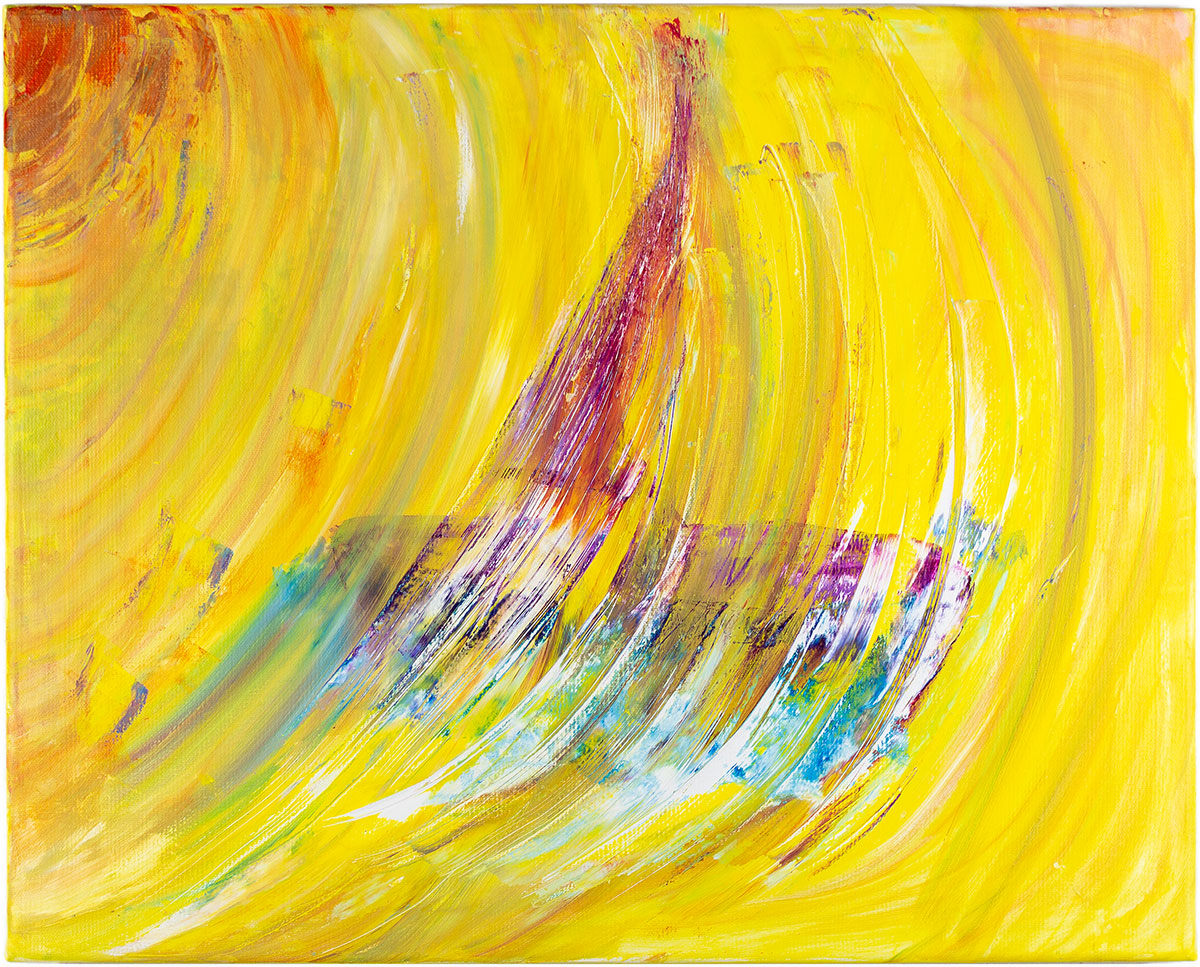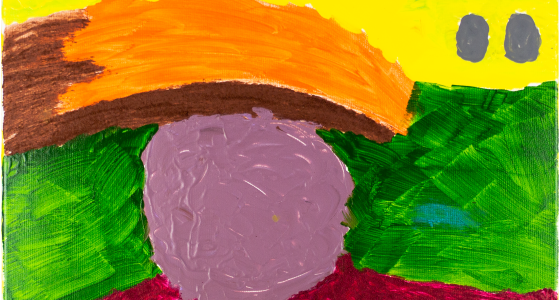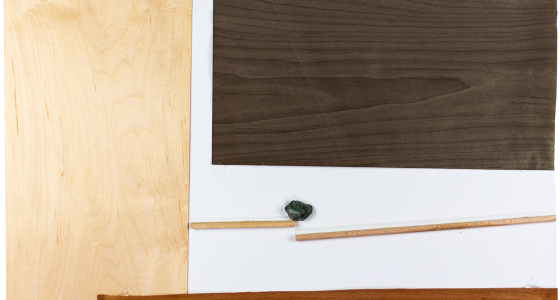Portraying life with dementia in new light and colour
A unique UBC research initiative explores what it means to live well with dementia through creative expression
Myrna Norman moves her paintbrush in big loops across her canvas. Swirls of brilliant yellow and gold begin to blend, obscuring hues of blue and pink acrylics below.
“I just love colour, especially the different shades of yellow,” she says, standing at an easel reflecting on her painting of a sailboat.

Since being diagnosed with dementia 13 years ago, creative expression has become a critical outlet for Myrna.
“When I was diagnosed, I was told to get my affairs in order and that I would have about eight years to live. I cried for two weeks after receiving the news,” she recalls. “But then I realized I couldn’t let the diagnosis and disease stop me. I had to turn it around.”
A few years ago, through a unique UBC faculty of medicine research initiative, Myrna was given an opportunity to use her creative interests to help amplify the voices and perspectives of people living with dementia.
Creating an alternative narrative
Led by Dr. Susan Cox, an associate professor at the UBC School of Population and Public Health’s W. Maurice Young Centre for Applied Ethics, and UBC postdoctoral fellow Dr. Gloria Puurveen, the research project set out to explore the meaning of living well with dementia through the eyes of those with the disease and their care partners.
“Dementia is often viewed with a lot of fear and stigma. Our intention with this project was to provide an alternative narrative of dementia: a narrative that focuses on the strength and resilience, the sources of joy and happiness, rather than just the narrative of decline and loss, which can be so devastating,” says Dr. Cox.
“We also wanted to foreground the voice of the person with dementia. We often presume we know what’s best for people with dementia and their family members and care providers, but with this project we wanted to hear directly from them about what they want and value,” she adds.
In addition to conducting in-depth interviews with participants like Myrna, the researchers ran a series of art workshops, bringing everyone under one roof at the North Burnaby Neighbourhood House.
Immersing themselves in everything from painting and poetry to sculpture and mask making, the group members were encouraged to express themselves creatively, sharing where they found strength and a sense of joy and community.
“Dementia is often a very difficult disease to talk about, but the art stimulated a deeper discussion and surfaced thoughts and feelings that hadn’t emerged during our earlier conversations,” says Dr. Cox.
A healing journey
For participants, like Myrna, the art workshops—which moved to a virtual format when COVID-19 hit—were invaluable.
“It was never really about the painting or the collage, but the process of creating together. I got such strength hearing from other people with dementia about their joys and their successes,” says Myrna, who serves as a powerful advocate for others living with dementia in her community.
“I may not be able to cook anymore because I’ll invariably leave the stove on; I may not be able to remember if I’ve taken my medication in the morning; and I may not be able to find the right words all the time, but this experience taught me there is still so much that I can do. The workshops were a gift and gave me a real sense of community, confidence and acceptance,” she reflects.
For care partners, like Dr. Glo McArter, the experience of taking part in the art workshops with her husband, Jack, was transformative.
“I can’t change the reality that Jack doesn’t always know who I am, but every day I’m learning about myself, and the need to be present with the pain and the struggle in a non-judgmental way,” she says.
In April, Glo and Jack celebrated their 44th wedding anniversary.
“Being part of the workshops was very healing—it was comforting to know that I’m not alone on this journey and that people are interested in my story, and in my experiences,” she adds.
Bridging art and research
In celebration of the culmination of the three-year research project, a collection of the art is available as part of an online exhibit titled In There Out Here: Art Making Space to Live Well With Dementia. Since launching, the exhibit has received thousands of visitors from more than 27 countries around the world, and is being used by several universities to teach courses on gerontology and aging.
“This project is part of a really exciting movement in the field of health research, where we’re seeing art being used to not only conduct research, but to bring the findings to the wider world in a way that a traditional research publication can’t always do,” says Dr. Cox.
Moving forward, Dr. Cox plans to continue using a variety of different art forms to conduct research. She is currently pursuing another project using theatre to explore graduate supervision at UBC.
Watch “Behind the Scenes”:
The project was funded by the Canadian Institutes of Health Research, the Alzheimer Society of Canada and the Michael Smith Foundation for Health Research.
The online art exhibit was co-created by UBC Master of Fine Arts graduate students Samantha Pineda Sierra and Heather Neale Furneaux.
Image credit: All images were provided by the team of contributors and creators of the exhibit, In There Out Here.
Published on: Jun 14, 2021





